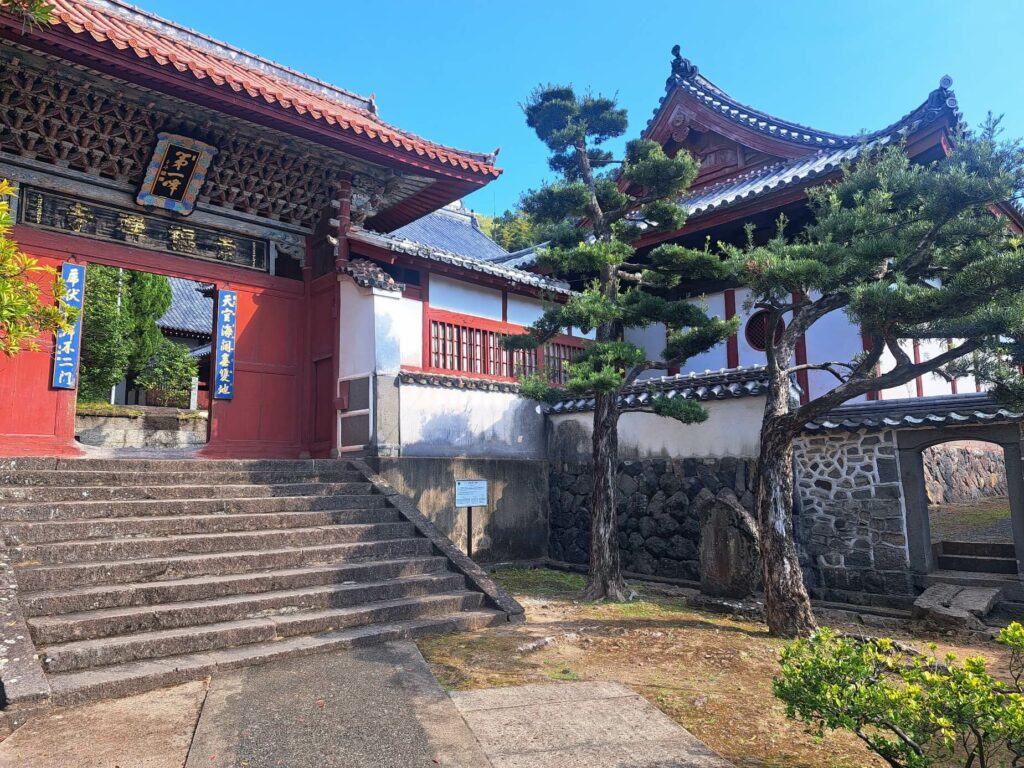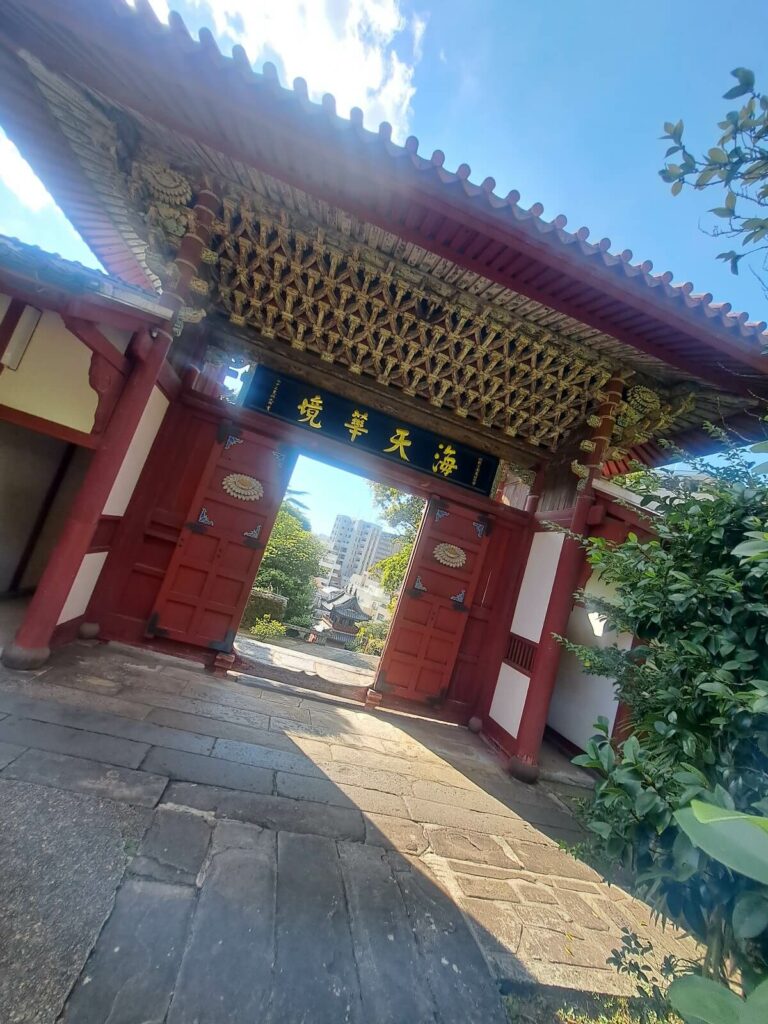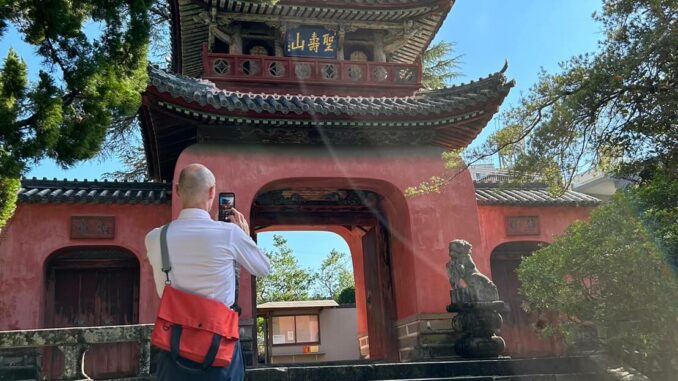
I was in Nagasaki earlier this month to see my daughter performing with her Cheerleading group at their university festival.
While I was there I had the opportunity to visit a few shrines and temples and the one that most impressed me was Sōfukuji (崇福寺), a temple that was built for the Chinese trading community in Nagasaki in 1629.
Translation of “Sōfukuji”
The name of the temple consists of three characters:
- 崇 “Sō” = “reverence.” “venerate,” or “worship.”
- 福 “Fuku” = “fortune,” “luck,” “blessing.”
- 寺 “Ji” = temple
So we might translate it as “the Temple of Venerable Fortune.”
Chinese Origins of Sōfukuji
Sōfukuji is a temple in the Chinese-influenced Zen tradition known as “Ōbaku-shu.” In Japanese Buddhism there are three main schools of Zen. “Ōbaku-shu” is the third and smallest, and was founded by a Chinese Zen Buddhist monk called Yinyuan Longqi (1592–1673).
Sōfukuji was built with permission of the governer of Nagasaki to provide Chinese traders in the city with a temple of their own in a Ming Dynasty style that would be more familiar to them. That is not to say that there are no Japanese influences in the architecture, but the Chinese Ming Dynasty influence is immediately evident in the numinous weightiness of the columns that support the buildings in the temple precincts, and the style of the entrance gate, which was rebuilt in the 19th century, (top photo) and the second (“Daiippomon”) gate.
The Daiippomon Gate is a Japanese National Treasure. It was built in China, then taken apart and shipped over to Japan to be rebuilt at the entrance to the main temple buildings. The woodwork under the roof of the gate is incredibly intricate.
I couldn’t resist the bats and lotus flower on the doors of the gate, when viewed from the inside:
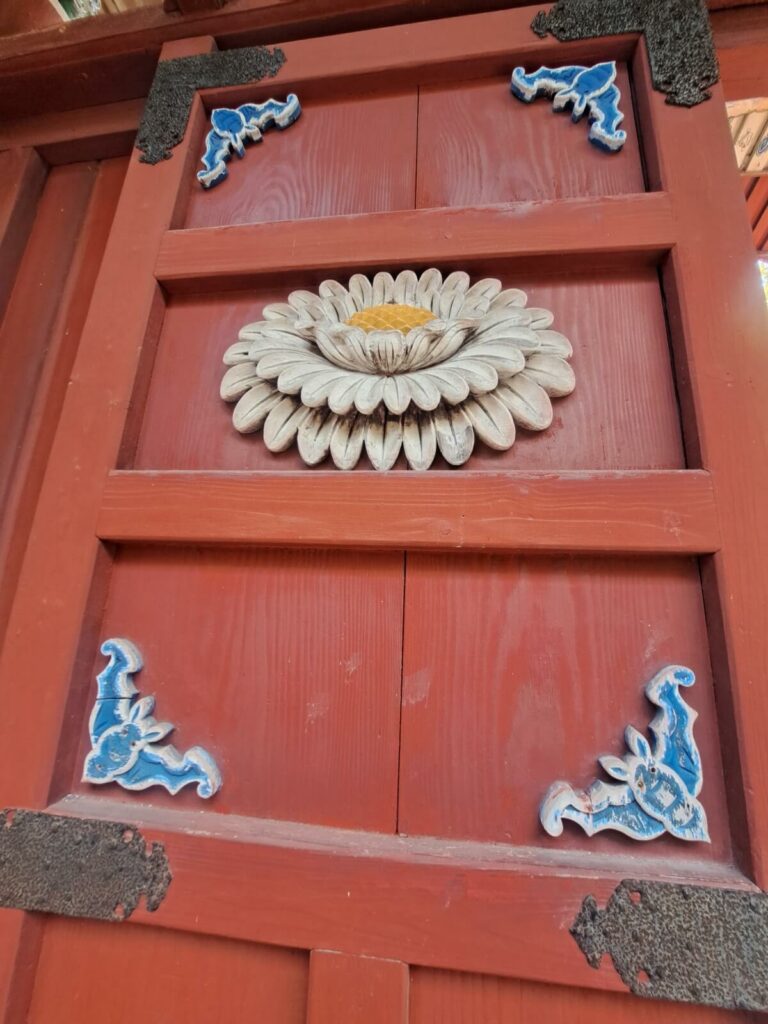
Worshipping the Sea Goddess “Maso”
So, so far, we have a Ming Dynasty Chinese Zen Buddhist temple… but that is not all! Just as we can often find altars to Shinto deities lurking inside Japanese Buddhist temples, so too inside this Chinese Zen Buddhist temple there is a major shrine dedicated to the Chinese Goddess of the Sea, Maso (aka Mazu, Matsu etc). Maso worship was prominent in Fujian (coastal China opposite Taiwan), and other coastal areas of China as well as in Taiwan.
Maso worship was brought to Japan by Chinese traders whose ships were protected by Maso statues. When a Chinese ship docked in Nagasaki, the Maso statue would be transferred to one of the Chinese Buddhist temples in the city. At Sōfukuji Maso is enshrined in the Masodou and Chinese seafarers would visit the temple to pray to Maso before embarking on a voyage.
As far as I am aware, Maso worship did not catch on in Japan beyond the immigrant Chinese trading community.
In the photo below, Maso is enshrined in the hall on the far right. The “Daihoden” main hall was constructed in China and then shipped to Nagasaki and reassembled.
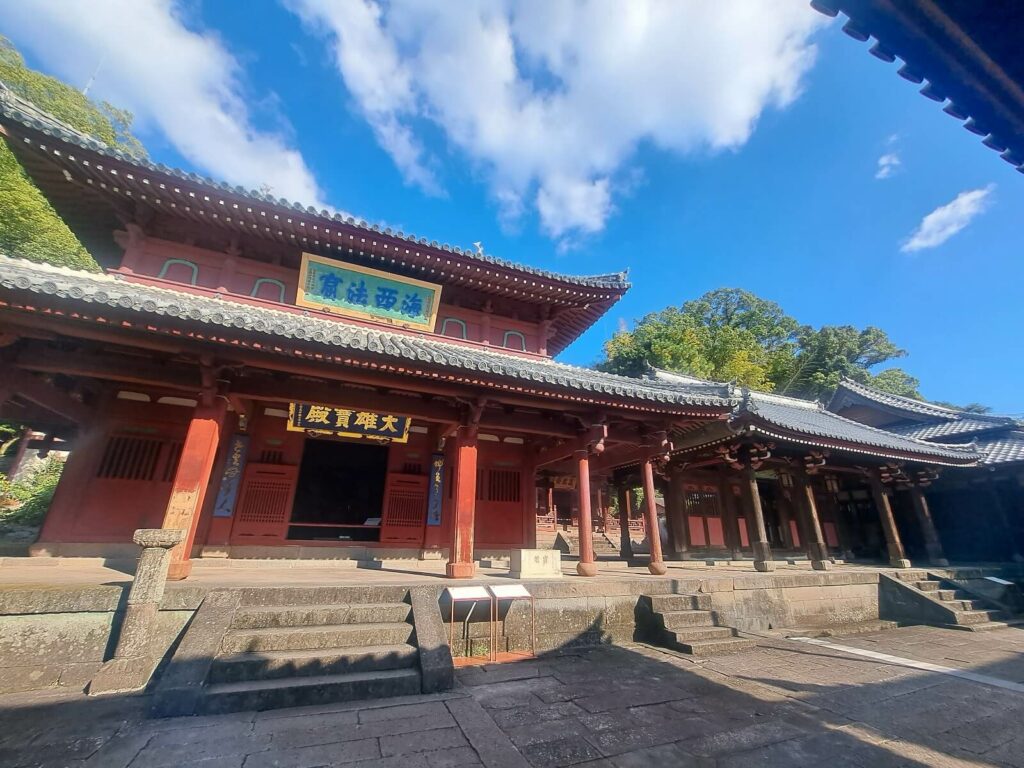
Photos
- I am at the outer “Sanmon” gate, rebuilt in the 19th century, and so one of the newest parts of the temple complex. The Chinese style is immediately apparent.
- The second gate, from the outside. It is the “Daiippōmon,” constructed in China, and now a national treasure in Japan.
- The same gate viewed from the inside, looking out.
- Detail of a door of the second gate. I love the bats and the way the lotus flower has been carved so that it looks much more three-dimensional from our vantage point than it actually is.
- The “Daihoden” main hall. Like the Daiippōmon gate, the main hall was also constructed in China, shipped over to Nagasaki and reconstructed.
Cheers!
David Hurley
#InspiredFocus

